CEIR presents at the 15th International Conference on ENTERprise Information Systems
The team of the Center for Enterprise Information Research (CEIR) presented five conference papers at the 15th International Conference on ENTERprise Information Systems (CENTERIS), an AIS affiliated conference that took place in Porto, Portugal.
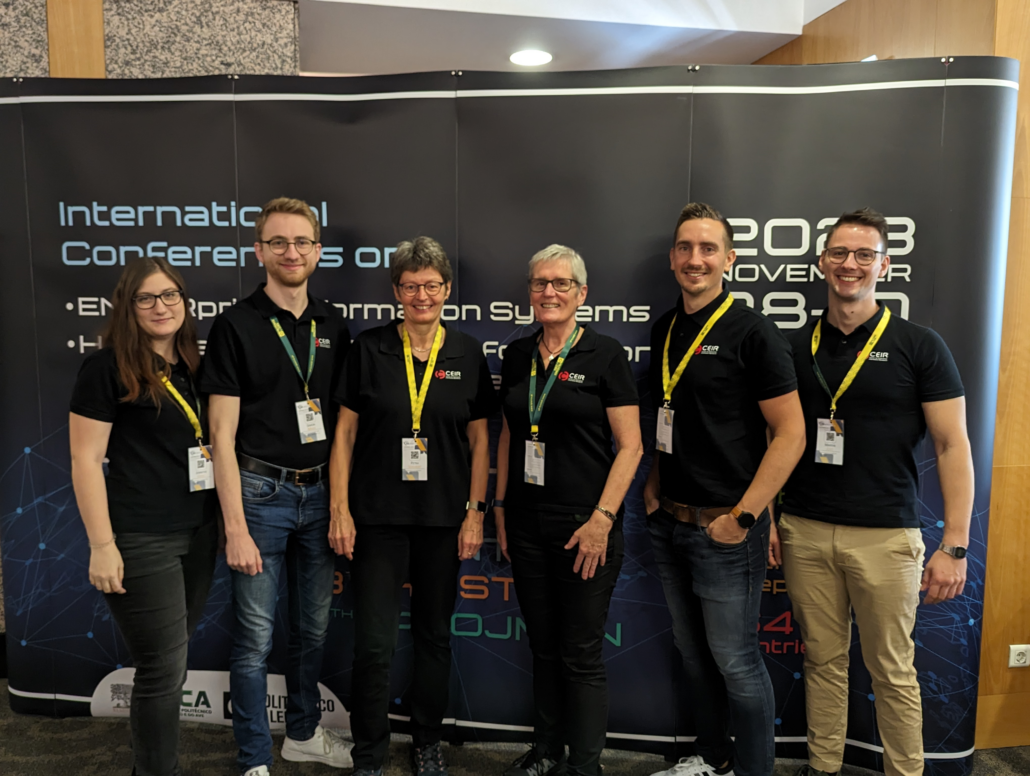
The first presentation addressed the diversity of collaborative work practices in organisations. Julian Mosen provided insights into the diversity of usage of enterprise collaborations systems from a document perspective and visualised the variations in collaborative practices for online meetings. The main results of this exploratory study reveal that there are fewer common practices than might be expected and that documents, which are related to an online meeting, are often created and stored across multiple (often unconnected) information systems.
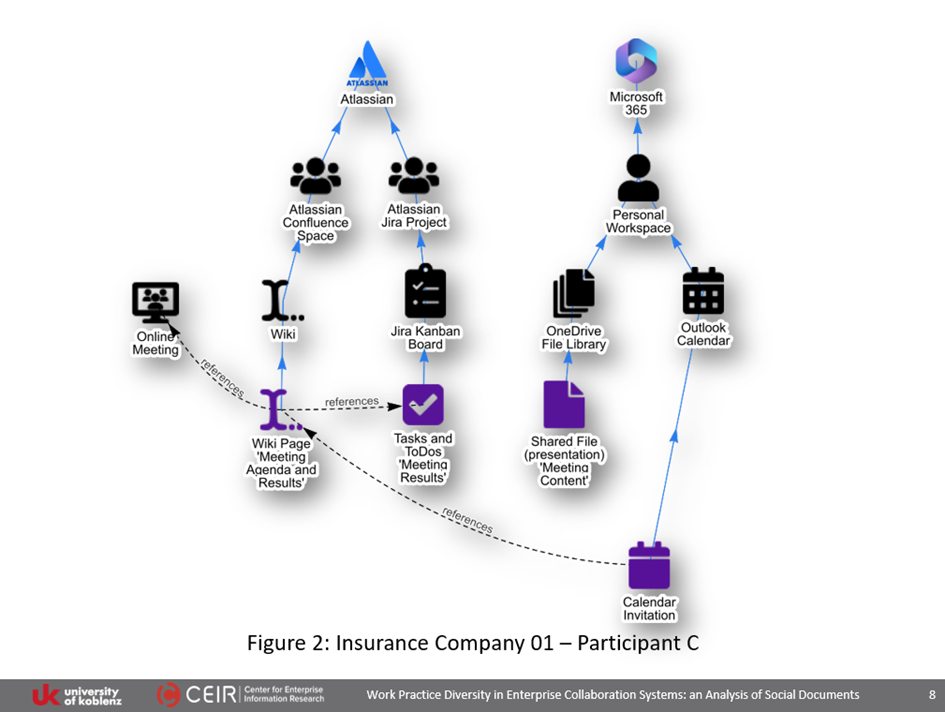
In our second presentation Simon Meier presented the new concepts of Content Apps and Context Apps. These two concepts are the result of an in-depth case study with our IndustryConnect partner Vössing Ingenieure and they assist in describing the composition of employees’ digital workspaces. Vössing developed two applications that utilise these concepts and that can be used to help the user and the IT-department to understand and manage their heterogeneous digital workspaces.
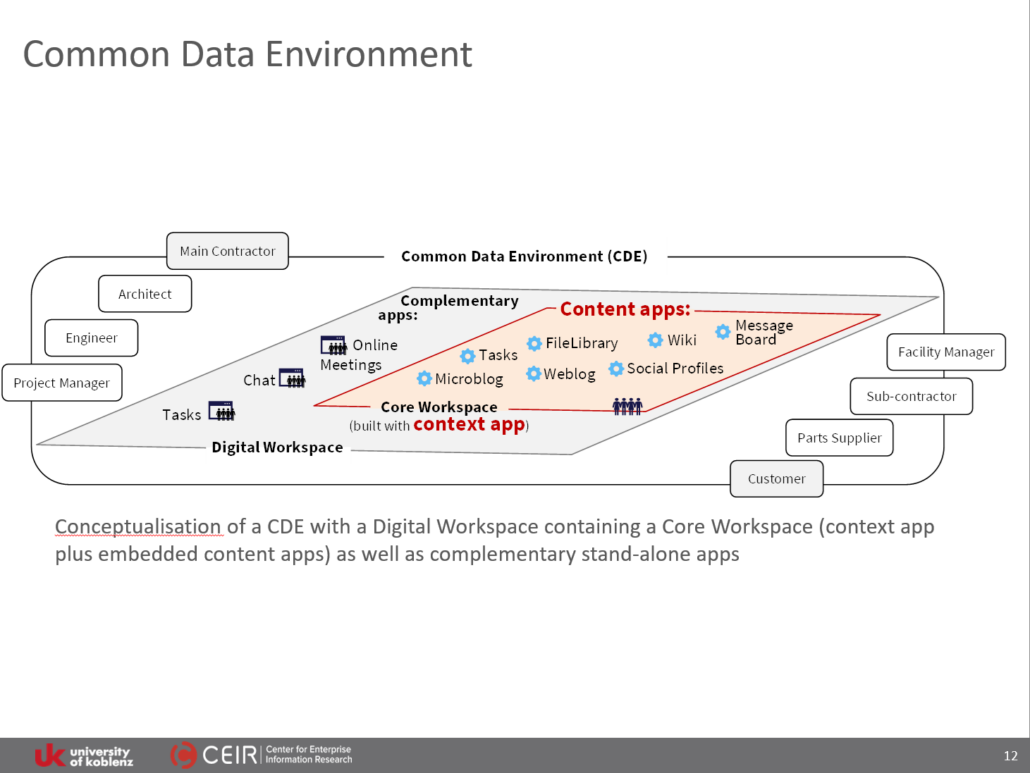
Petra Schubert presented the latest findings related to the “Identification of Requirements for Enterprise Collaboration Systems” (IRECS). The IRECS Framework provides a classification comprising five layers – from a high-level business view of collaborative work to a detailed consideration of the software modules that fulfil the functional requirements. The framework is a result of a ten-year Design Science Research process and provides a comprehensive classification of the digital support of collaborative work and a complementary taxonomy of empirically observed examples. It provides a valuable analytical lense for researchers and can also be used in practice as a guidance and checklist in the software selection process of organisations.
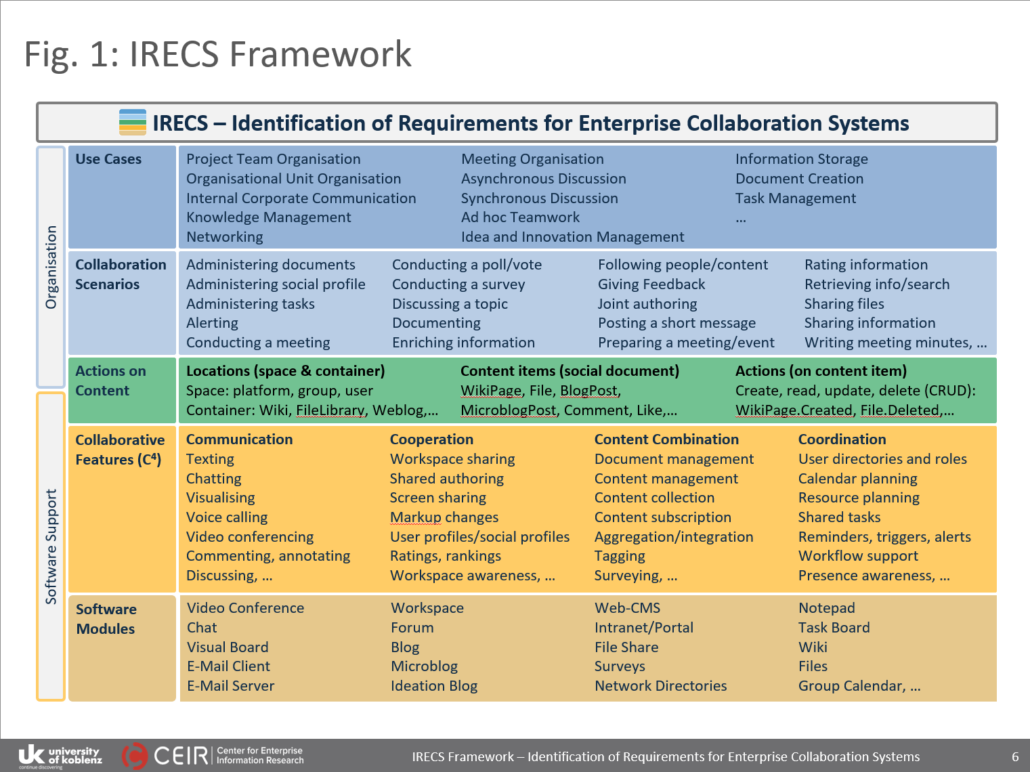
In our fourth presentation Martin Just introduced the Data PreProcessing for Cross-System Analysis (DaProXSA) approach which was developed by Martin, Petra, Jonas Blatt and Patrick Delfmann. The approach evolves around the data preprocessing of event logs from collaboration software to create data spaces containing high-quality, harmonised, multi-system event records. DaProXSA is structured into three phases, each leveraging different techniques that have been selected to specifically support the collection, cleaning and transformation of event logs from collaboration software. Seven distinct steps need to be followed gain Multi-System ColActDOnt-Log (C-Log) which enables meaningful analyses of computer-supported collaborative work to yield actionable insight.
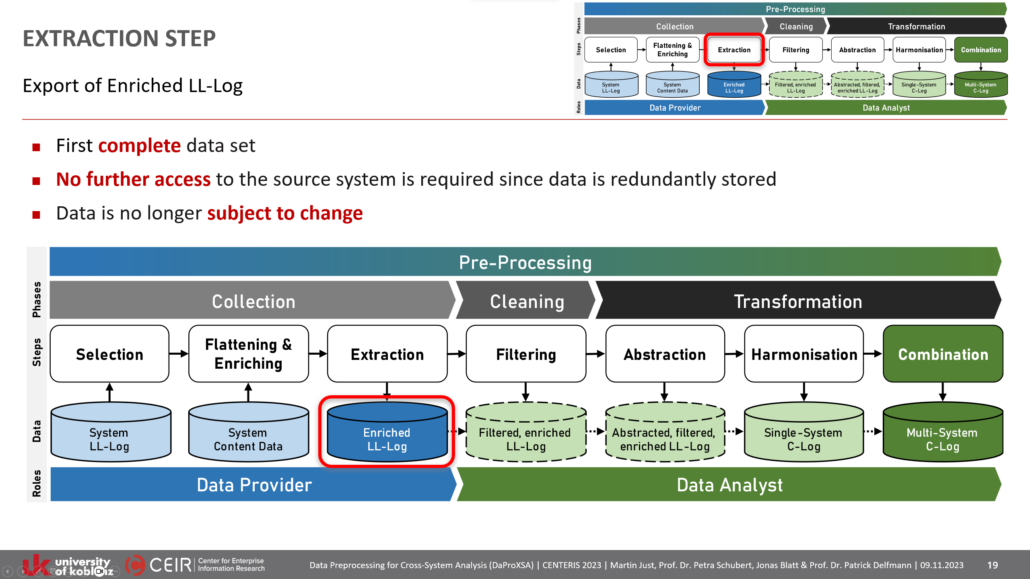
The fifth presentation explored the diversity of types of workgroups and potential means to better support these different kinds of workgroups. Jennifer Gerbl presented the identified key dimensions used to describe and characterise organisational workgroups as well as their potential implications for informing the design of workspaces. These dimensions can support in making more informed decisions when it comes to the workspace assembly, the information design and content, and the coordination and awareness mechanisms a workgroup requires.
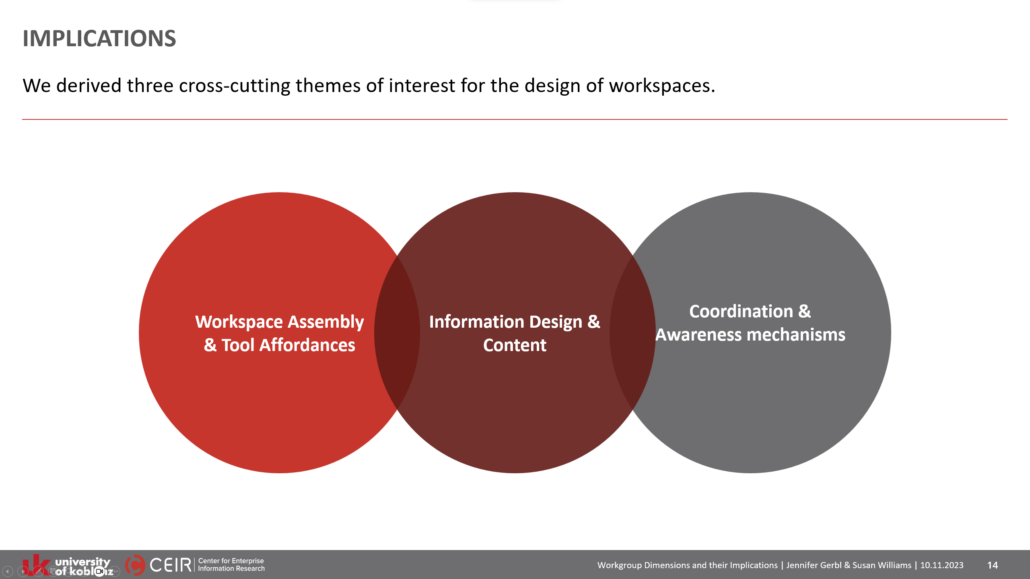
The conference proceedings of CENTERIS including our publications will be published by Elsevier as a Procedia Computer Science series volume and will be publicly available on Sciverse ScienceDirect, soon.
| [1] | Gerbl, J., & Williams, S. P. (2023). Identifying workgroup dimensions and their implications for the design of digital workspaces. CENTERIS – Conference on ENTERprise Information Systems 2023. |
| [2] | Gewehr, B., Schubert, P., & Meier, S. (2023). A Case Study on the Use of Context Apps and Content Apps for User-Managed Digital Workspaces. CENTERIS – Conference on Enterprise Information Systems. |
| [3] | Just, M., Schubert, P., Blatt, J., & Delfmann, P. (2023). Data Preprocessing for Cross-System Analysis: The DaProXSA Approach. CENTERIS – Conference on Enterprise Information Systems. |
| [4] | Mosen, J., Williams, S. P., & Schubert, P. (2023). Work Practice Diversity in Enterprise Collaboration Systems: an Analysis of Social Documents. CENTERIS – Conference on Enterprise Information Systems. |
| [5] | Schubert, P. (2023). IRECS Framework: Identification of Requirements for Enterprise Collaboration Systems. CENTERIS – Conference on Enterprise Information Systems 2023. |

